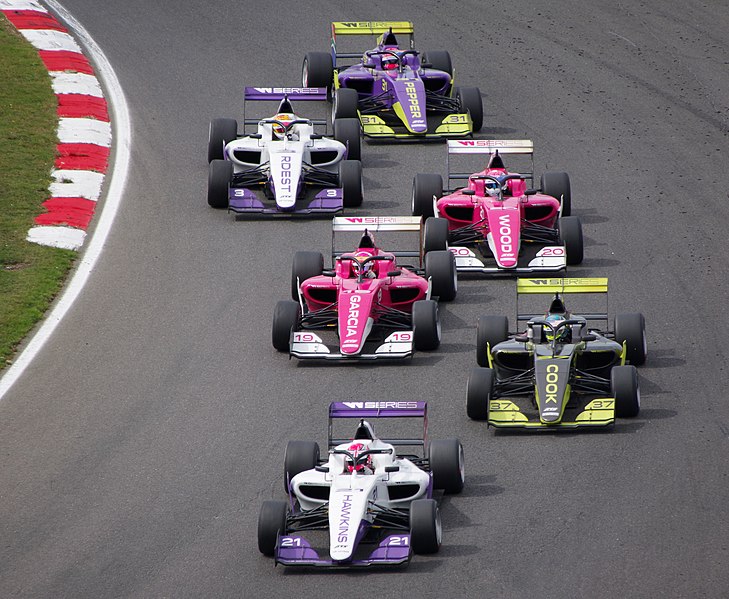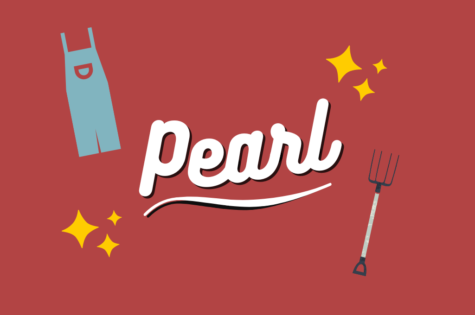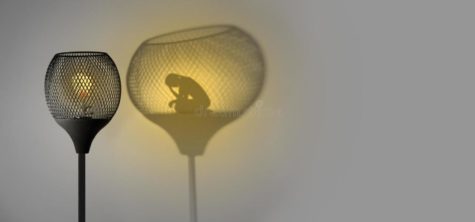The W Series: Why it Helps, Why it Doesn’t
The W Series was created to remove the financial barrier for women in motorsport. However, criticism has been drawn on how competitive and helpful the series really is.
mattbuck https://commons.wikimedia.org/wiki/File:2019_W_Series,_Brands_Hatch_(48854549808).jpg
W series race in Brands Hatch, 2019.
December 8, 2021
“The reason why so few women have so far raced successfully at the highest levels against men may, however, be a lack of opportunity rather than a lack of capability. And that’s why I’m so pleased to be involved in W series, to contribute to creating a platform on which women drivers can improve by racing one another and from which they may then springboard their careers forward and, yes, ultimately race successfully in F1,” said Chief Technology Officer of the Red Bull Racing, Adrian Newey, according to wseries.com.
The cost for a young driver to enter racing has skyrocketed since the beginning of 2010, with Formula 3 costing over 100,000 dollars to compete. Many young drivers, particularly women, have been called out by the costs and therefore may not have an opportunity to compete at all.
That’s where the W series comes in, to eliminate costs for young women drivers by providing an opportunity to race without sponsors or adequate funding. The championship winner wins 500,000 dollars to either continue a career in a single-seater championship or perhaps venture into another career.
There are some glaring issues with how competitive the W Series is, however. The W Series uses Tatuus’s formula regional chassis for their cars, which is slower than the Formula 3 cars. The limitation of the cars performance also means that many women who are racing in top categories of racing, wouldn’t bother with racing in the W Series.
the W Series has undoubtedly helped women drivers work their way up the ladder
“The best drivers who are already in professional teams of course don’t want to race in the W Series, which also explains the limited level of the Series since the best performers don’t participate,” said 4-time World rally race winner and head of the Women and Motorsport commission, Michele Mouton, in an interview with Le Figaro.
There is also criticism being drawn from the fact that the W Series separates men and women. IndyCar driver, Pippa Mann, has been outspoken on this issue on social media, stating that she supports bringing up women in motorsport but does not believe separating the championships is the key to do so.
Michele Mouton also believes that having a separate championship for women would not prepare them to compete with men. In an interview with Le Figaro, Mouton said, “Personally, I believe that as long as they will not be confronted with the competition of the boys of their generation, it will be difficult to emerge in Formula 1, where it is no longer a question of being one of the best women, but one of the best drivers in the world, and for that the road is still long.”
Despite its criticism, the W Series has undoubtedly helped women drivers work their way up the ladder. Jamie Chadwick, 2-time W Series champion, was signed on to Williams Racing as a development driver in 2019. Two drivers who competed in the 2021 W Series season, Nerea Marti and Irina Sidorkova, are set to test Formula 3 cars in November.
The W Series and its drivers have a long way to go before they are able to reach Formula 1, and it’s arguable that the W Series may be setting them up for failure. However, the opportunity to race in a series without a financial barrier would definingly increase the chance of women driving in a competitive series as well as staying as a driver.
“If the W Series can be seen as a detection/selection channel to attract more young women into motorsport and allow them to move up to the higher mixed categories to continue their progression, as our Girls on Track karting program does, then I’m all for it. If not, this championship will remain, in my eyes, limited and discriminating with women only allowed to compete against each other,” Michele Mouton said, in an interview with Le Figaro.














